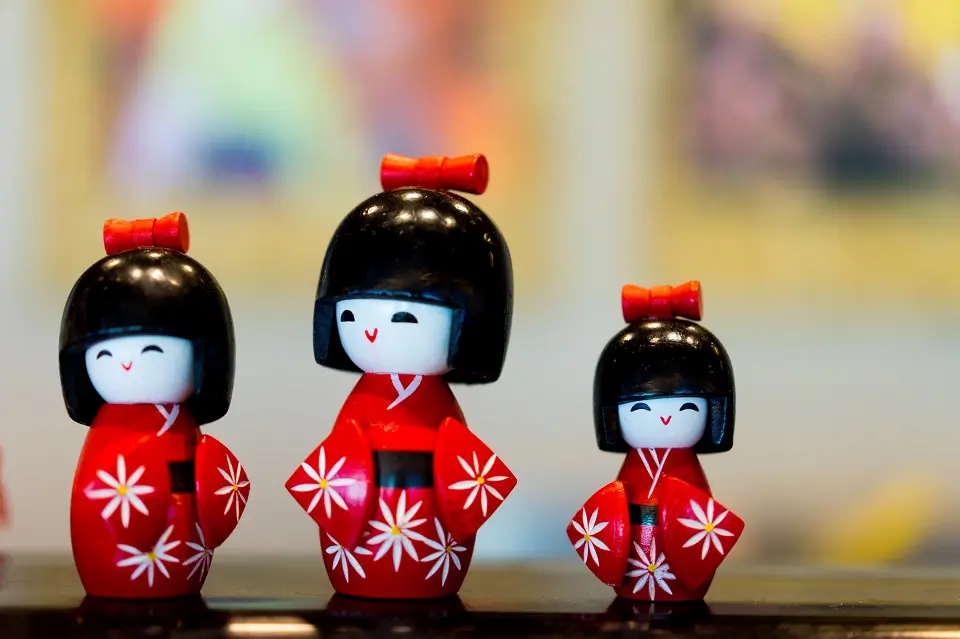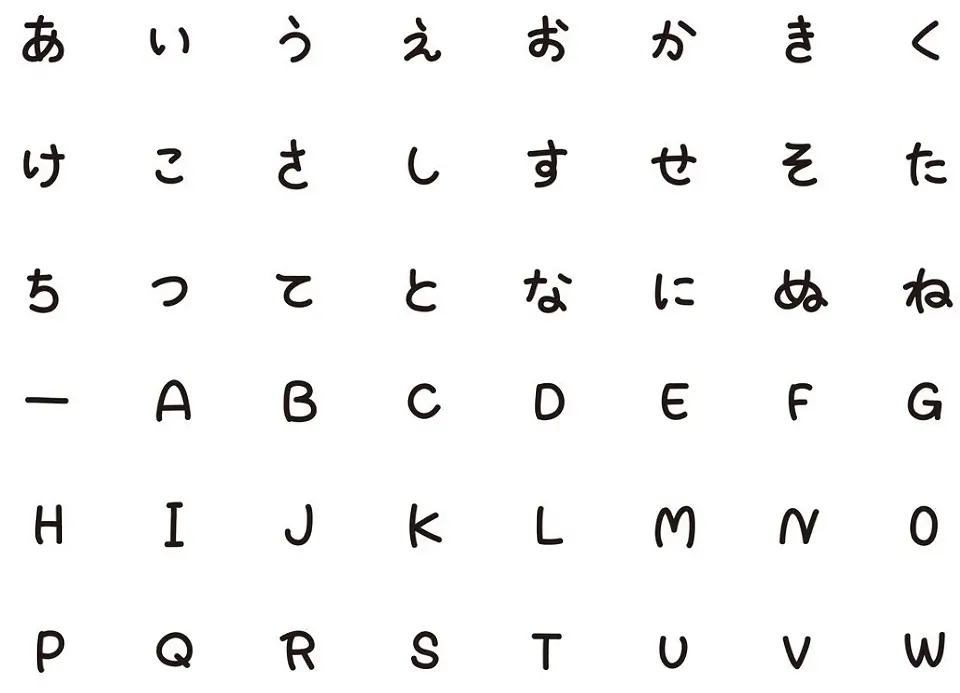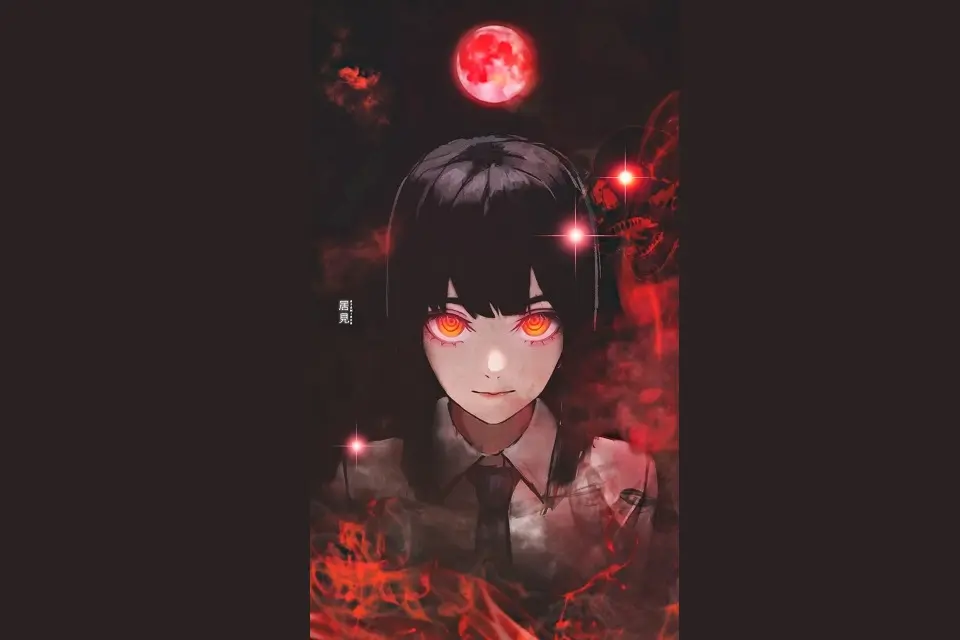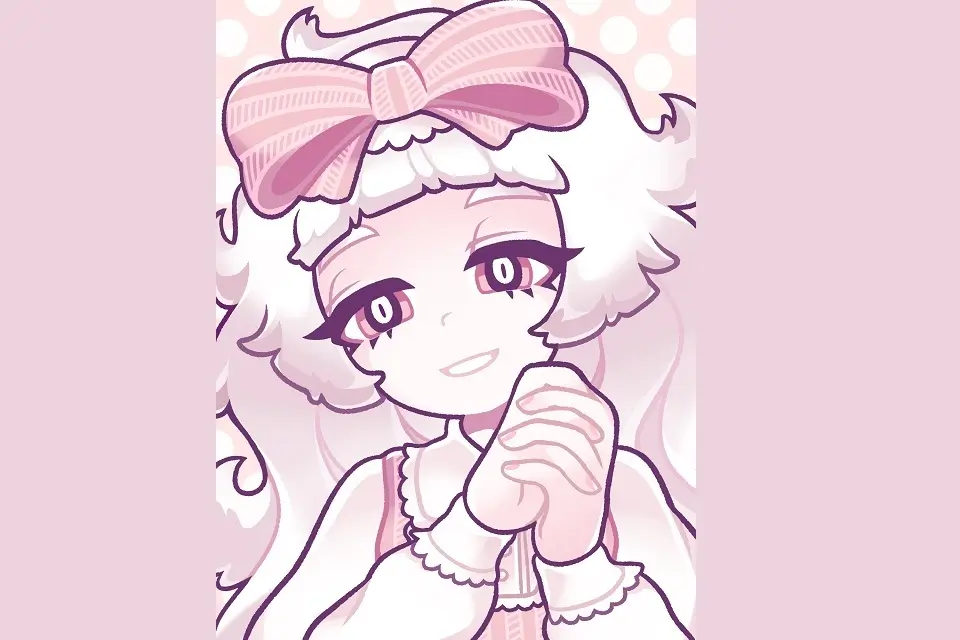Kawaii Culture: The Power of Cuteness

Kawaii culture is a Japanese aesthetic centered around the appeal of cuteness, characterized by childlike, charming qualities and playful elements.
Japan, known for its cultural phenomena that touch every corner of the globe, has given the world another captivating phenomenon known as Kawaii culture.
The word ‘Kawaii’ (可愛い or かわいい) means ‘cute’ or ‘lovable.’ It was originally used to describe anything that evoked a feeling of warmth and tenderness. Over time, Kawaii has grown from a simple descriptive word to a significant cultural trend, encompassing various forms of media, fashion, art, and consumer products.
Kawaii culture has deeply influenced Japanese culture, social norms, aesthetics, and economy. Like the Otaku culture, its power has transcended national borders, permeating global pop culture and resonating with audiences worldwide.
This article explores the origins and evolution of Kawaii culture and its societal perceptions in Japan. We will also discuss Kawaii culture’s global impacts. It will also delve into its significant role in shaping contemporary Japanese identity and influencing societies far beyond Japan’s borders.
Origin and Evolution of Kawaii Culture
The Kawaii aesthetic, characterized by celebrating all things cute, playful, and childlike, has a rich and varied history. Let’s have a look at how the Kawaii culture originated in Japan and how it evolved:
Origin:
The roots of Kawaii culture can be traced back to the Taisho era (1912-1926). It was when a youthful, handwritten style known as ‘maru-moji’ became popular among schoolgirls. This rounded, childlike script differed from the traditional, rigid Japanese writing styles.
Marumoji


‘Maru-moji,’ (丸文字) which translates to ’round letters’ or ’round script’, is a type of handwriting style commonly seen in Japan. The name derives from its characteristic rounded, softer shapes and strokes.
This style of handwriting is often associated with cuteness and femininity. Therefore, it’s widely used in contexts where these qualities are desired. For example, it might be employed in personal letters, stationery design, shop signs, advertising, and other places where a sense of friendliness, approachability, or cuteness is desired.
Maru-moji can be seen as part of the broader Kawaii culture in Japan. Its soft, rounded aesthetic ties in with the overarching theme of ‘cuteness’. Therefore, its usage reflects the influence of Kawaii culture on everyday aspects of Japanese life, including written communication.
It’s worth noting that while Maru-moji is popular, it’s not typically used in formal or professional contexts. More traditional, angular handwriting or typing styles are generally preferred in these settings.
As with many elements of Kawaii culture, Maru-moji’s popularity has spread beyond Japan, and its influence can be seen in various aspects of international pop culture and design.
Evolution in the Post-War Era:
In the years following World War II, Japan underwent significant cultural and social changes. As the country modernized, a new middle class emerged with disposable income, fostering the growth of consumer culture. With this, Kawaii aesthetics started gaining popularity.
Influence of Shōjo Manga on Kawaii Culture:
In the 1960s and 70s, Shōjo manga (manga aimed at young girls) played a pivotal role in developing Kawaii culture.
Moto Hagio and Riyoko Ikeda are among the artists known for their unique styles. They bring their characters to life using specific visual elements. Large eyes are one such characteristic they employ.
Both Hagio and They also depict their characters with soft, rounded faces. Both these features stand as central to Kawaii aesthetics.
The ‘Hello Kitty’ Phenomenon:
Sanrio‘s creation of the ‘Hello Kitty’ character in 1974 marked a significant milestone in the evolution of Kawaii culture. The success of Hello Kitty, both in Japan and globally, propelled Kawaii culture into mainstream consciousness.
Modern Kawaii:
Today, Kawaii culture is seen everywhere in Japan. It’s in fashion, TV shows, food, and even things we use at home. There are also different types of Kawaii now. Some examples are ‘Gurokawa’, a mix of cute and scary, and ‘Yumekawaii’, which is dream-like and cute.
What is Gurokawa?


Gurokawa is a type of Kawaii or ‘cute’ style in Japan. But it’s a little different. ‘Guro’ comes from ‘grotesque’, which means ‘strange and unpleasant’ or “Creepy Cute”. ‘Kawaii’ means ‘cute’. So, Gurokawa is a mix of something strange and cute.
Gurokawa style is special. It mixes cute things with scary or strange things. This creates a very different look. This style is seen in Japanese media and fashion, including manga, anime, and clothing.
Characters or designs in the Gurokawa style may feature typical Kawaii characteristics, like big eyes and exaggerated cuteness, but with darker, sometimes horrific elements.
For example, some common Gurokawa themes might include cute characters with zombie-like features, cute characters in spooky or creepy situations, or cute objects combined with horror elements. Gurokawa pushes the boundaries of what is considered ‘cute’ and challenges the conventional norms of the Kawaii aesthetic.
One popular instance of Gurokawa is the ‘gloomy bear’ character by Mori Chack, a cute, pink bear that often has blood around its mouth, signifying it has attacked humans. This is a prime example of how Gurokawa blends traditional cute elements with darker themes.
Gurokawa, a part of Japanese pop culture, talks about society. It looks at how people are obsessed with cute and innocent things.
Gurokawa does something different. It adds scary parts to cute pictures. This makes people think about what is really cute or nice. Artists and fans use Gurokawa to show and explore deep feelings and thoughts, but they do it cutely.
What is Yumekawaii?


‘Yumekawaii’, translated as ‘dreamy cute’, is another subgenre of the broader Kawaii culture in Japan. The term is derived from the Japanese words “yume” (dream) and “kawaii” (cute).
Yumekawaii is characterized by its blend of fairy-tale aesthetics with pastel colors and cute motifs. However, it often includes an element of darkness or melancholy that distinguishes it from other ‘purely’ cute styles. This fusion creates a dreamlike, ethereal quality that lends to its name, ‘dreamy cute’.
Visual elements often associated with Yumekawaii include unicorns, rainbows, fluffy clouds, stars, and other magical or dreamy motifs, predominantly in pastel color palettes.
However, the style often incorporates unexpected or darker elements, such as tears, band-aids, or medical motifs. These may appear on cute characters or in cute contexts, creating a bittersweet or melancholic tone.
A popular example of the Yumekawaii style is the ‘Menhera-chan’ character, a cute but troubled girl dealing with various emotional and physical ailments. Despite her struggles, she maintains a positive and resilient outlook. In this way, Yumekawaii engages with themes of mental health and personal struggle in a manner that is both accessible and non-threatening.
Fashion inspired by the Yumekawaii aesthetic often features clothing and accessories that incorporate these visual elements, with popular brands like ‘Swankiss’ and ‘MILK’ contributing to the style’s development and popularization.
In essence, Yumekawaii reflects a more complex expression of cuteness that acknowledges darker or more melancholic aspects of life while maintaining a hopeful, dreamy aesthetic. This duality helps differentiate Yumekawaii from other Kawaii subgenres and has contributed to its unique appeal in Japan and internationally.
Kawaii Culture’s International Influence:
The global popularity of Kawaii culture has positively impacted Japan’s international image. For many people worldwide, Kawaii culture represents a significant part of their perception of Japan.
Beyond Japan, Kawaii culture has made its mark on global fashion, art, and entertainment. Western celebrities like Gwen Stefani and Katy Perry have embraced and popularized Kawaii aesthetics, and the ‘Korean wave’ (Hallyu) has incorporated Kawaii-inspired elements into its fashion and pop culture.
The evolution of Kawaii culture reflects wider societal changes in Japan, from the rise of consumer culture to shifts in gender norms. Its international appeal also underscores the global influence of Japanese popular culture.
The Psychology of Kawaii: Why is ‘Cuteness’ so Powerful?
The psychological appeal of Kawaii, or ‘cuteness’, is a fascinating topic that can be understood through various lenses, from biology to sociology.
The Baby Schema:
This is a term used in the field of ethology to describe the set of facial and bodily features that make a creature appear ‘cute.’
Such features include a large head relative to the body, a high and protruding forehead, large eyes, and chubby cheeks. These are all characteristics we associate with babies, both human and animal. Research suggests that our positive reaction to these features is an evolutionary response that motivates us to care for these vulnerable beings.
Emotional Impact:
Kawaii items can induce positive feelings. A study published in the ‘SAGE Open‘ journal found that viewing cute images improved participants’ moods. Moreover, ‘cuteness’ is often associated with relaxation and a slower pace of life, offering an antidote to the high-stress, fast-paced modern lifestyle.
Nurturing Instinct:
The Kawaii aesthetic taps into the human instinct to nurture and protect. Cute objects are often small and vulnerable-looking, which can trigger a protective response in humans. This might explain why we often feel affection towards cute things.
Social Connection:
Kawaii can also serve to build social connections. A shared appreciation of Kawaii objects or characters can foster a sense of community and belonging among individuals.
Economic Incentive:
From a consumer perspective, Kawaii products have a strong appeal. The cuteness of a product can make it seem more desirable, driving purchases and promoting brand loyalty.
In summary, the power of Kawaii or ‘cuteness’ lies in its ability to elicit emotional responses, trigger our nurturing instincts, foster social connections, and motivate consumer behavior. While Kawaii culture is a distinctly Japanese phenomenon, the psychological underpinnings of its appeal are universal.
Kawaii’s Influence on Fashion, Art, Language, and Consumer Products
Kawaii culture significantly influences different sectors of Japanese society, including fashion, art, language, and consumer products.
Influence on Japanese Fashion:
Kawaii has heavily influenced Japanese fashion, inspiring styles such as ‘Lolita’ (emphasizing modesty and Victorian-era clothing) and ‘Decora’ (characterized by colorful clothing and many accessories). Harajuku, a district in Tokyo, is famous globally as the center of Kawaii fashion.
Japanese Art:
Kawaii aesthetics have permeated Japanese art. We can see this influence in the works of artists like Takashi Murakami, who blends traditional Japanese art with Kawaii culture in a style termed as ‘Superflat.’ Murakami’s art has been exhibited worldwide, showcasing Kawaii aesthetics internationally.
Japanese Language:
Linguistically, Kawaii culture has popularized a ‘cute’ way of speaking, often associated with young girls, characterized by high-pitched tones and childlike expressions. Certain words and phrases have also entered the popular lexicon, such as ‘moe,’ often used in Otaku slang to denote something precious or adorable.
Consumer Products in Japan:
Kawaii culture has a significant impact on product design. From stationery and kitchenware to electronics and cars, the infusion of ‘cuteness’ into product design is a powerful marketing strategy that resonates with consumers. Characters like Hello Kitty and Pikachu have been used extensively in branding and merchandising.
Mascot Culture:
Kawaii influence is notably seen in Japan’s ubiquitous mascot culture, where everything from cities to companies has a cute character representing them. The practice, known as ‘Yuru-chara,’ has become a unique aspect of Japanese branding and marketing strategies.
In essence, Kawaii culture has shaped Japan’s cultural landscape and influenced commercial and economic sectors. Its power to connect with people on an emotional level drives its influence and makes it a significant component of Japanese soft power.”
Societal Perceptions of Kawaii Culture in Japan
Societal perceptions of Kawaii culture in Japan are varied, reflecting its widespread influence and multifaceted nature.
Mainstream Acceptance:
Kawaii culture has achieved significant mainstream acceptance in Japan. People observe its aesthetic elements in everyday life, such as fashion, product design, advertising, and entertainment. The presence of Kawaii mascots for companies, towns, and even government departments showcase the culture’s broad acceptance.
Commercial Success:
The success of Kawaii in the commercial realm is undeniable. Brands like Sanrio, creators of Hello Kitty, have capitalized on the appeal of Kawaii, producing a vast array of products that are popular both domestically and globally.
Feminine Identity and Empowerment: Some see Kawaii culture as a platform for women to express their individuality and challenge traditional gender norms. It has allowed women to embrace and express cuteness and femininity on their own terms.
Criticisms and Controversy:
Despite its popularity, Kawaii culture also faces criticism. Some argue that Kawaii perpetuates infantilizing stereotypes, particularly towards women, by encouraging them to emulate childlike cuteness. Others express concern that Kawaii culture promotes consumerism and superficiality.
In conclusion, societal perceptions of Kawaii culture in Japan are diverse and complex, reflecting the multifaceted nature of the culture itself. While largely accepted and even celebrated, Kawaii culture also invites critical discussion and debate, underscoring its cultural significance.
Famous Examples of Kawaii Culture
There are many iconic examples of Kawaii culture, some of which have gained global recognition and popularity. Here are a few:
Hello Kitty:
Sanrio created Hello Kitty in 1974, and she is now one of the most recognizable Kawaii characters globally. The mouthless white cat, adorned with a bow or flower on her ear, graces everything from pencil cases to airplanes.
Pokemon:
The Pokemon franchise is another famous example of Kawaii culture. Its roster of creatures, from Pikachu to Jigglypuff, embodies the cute, adorable aesthetic that Kawaii represents. Pokemon’s popularity extends well beyond Japan, with a thriving global fanbase.
Totoro:
The character of Totoro from Studio Ghibli’s ‘My Neighbor Totoro’ is another emblem of Kawaii. The friendly and comforting creature represents the gentle, childlike innocence that is a hallmark of Kawaii culture.
Rilakkuma:
Another beloved Kawaii character is Rilakkuma, a relaxing bear whose name is a portmanteau of the Japanese words for ‘relax’ and ‘bear.’ The character’s laid-back personality and endearing appearance have won the hearts of many.
Kumamon:
This black bear mascot from Kumamoto Prefecture has become an unexpected Kawaii superstar. Kumamon merchandise sells remarkably well, and the character has done much to promote tourism to Kumamoto.
These characters demonstrate the wide reach and diverse manifestations of Kawaii culture. They’re not just cute characters but also cultural ambassadors that generate significant economic value and foster international goodwill towards Japan.
The Economic Impact of Kawaii Culture in Japan
Kawaii culture’s influence extends beyond cultural expression into economics, which has a substantial impact.
Consumer Products:
Kawaii aesthetics have penetrated almost every facet of consumer goods, from clothing and accessories to household items and electronics.
Brands leverage the popularity of Kawaii design to drive sales. The global success of franchises like Hello Kitty and Pokemon, which include TV shows, movies, video games, and a vast array of merchandise, attests to the economic power of Kawaii.
Tourism:
Kawaii culture is a significant driver of tourism in Japan. Landmarks like the Harajuku district in Tokyo, known for its Kawaii fashion, and theme parks like Sanrio Puroland and Universal Studios Japan attract millions of domestic and international tourists yearly.
Marketing and Branding:
Companies are using Kawaii characters widely in marketing and branding. Using cute mascots, known as ‘Yuru-chara,’ by companies, government agencies, and even cities is a unique aspect of Japanese marketing. These mascots help cultivate a friendly and approachable image, boosting customer engagement and loyalty.
Exports and Global Market:
Kawaii culture has a significant international market. Japan’s export of Kawaii-related products, including anime, video games, toys, and fashion, contributes substantially to the country’s economy. The global popularity of Kawaii aesthetics also enhances Japan’s cultural influence, or ‘soft power,’ internationally.
Job Creation:
The Kawaii industry also contributes to job creation, employing designers, artists, retail workers, and others in producing, marketing, and selling Kawaii products and experiences.
In conclusion, Kawaii culture’s tangible economic impact drives consumer behavior, boosts tourism, and contributes to Japanese pop culture’s global popularity and economic strength.
The Global Influence and Perception of Kawaii Culture
Kawaii culture has transcended Japan’s borders to become a global phenomenon, influencing various aspects of international pop culture and fashion.
Global Pop Culture:
Kawaii has made significant inroads into global pop culture. Japanese franchises like Pokemon, Hello Kitty, and Studio Ghibli films have found enthusiastic audiences worldwide. “International pop culture products, from video games to animation, frequently adopt the Kawaii aesthetic, revealing its broad appeal.
Global Fashion:
Kawaii fashion has become popular internationally, with online communities and physical stores catering to fans outside Japan. It has also influenced Western fashion designers, with Kawaii elements appearing on international runways.
Art:
The Kawaii aesthetic has inspired artists worldwide, shaping global art trends. Notable is the work of artists like Takashi Murakami, whose blend of traditional Japanese art and Kawaii culture has gained international acclaim.
Internet and Social Media:
The internet has played a significant role in spreading Kawaii culture. Social media platforms, fan websites, and online communities provide spaces for Kawaii fans worldwide to connect and share their love of the culture.
Languages:
The term ‘Kawaii’ itself has been adopted by many languages, reflecting the culture’s global popularity. Other Japanese words associated with Kawaii culture, such as ‘otaku’ and ‘manga,’ have also entered the global lexicon.
Global Perception:
People worldwide often associate Kawaii with a positive image of Japan – creative, fun, and approachable. But people can also misunderstand or stereotype it, showing that we need a deeper understanding of the culture.
Kawaii culture has a significant global influence, impacting various facets of international pop culture, fashion, and art. Its worldwide popularity highlights Japan’s cultural power and ability to shape global trends.
Conclusion
In conclusion, the Kawaii culture of Japan has not only captured the hearts of the Japanese people but also charmed audiences globally. With its roots in the need for comfort and affection, it has evolved into a phenomenon influencing fashion, art, language, and consumer behavior in Japan and beyond.
The economic implications of Kawaii culture are significant, from boosting domestic consumption to driving international demand for Japanese cultural products. Kawaii has played a fundamental role in the growth and internationalization of ‘Cool Japan,’ cementing Japan’s position as a cultural superpower.
However, as with any cultural phenomenon, Kawaii is not without its challenges and criticisms, from the potential infantilization of women to the fostering of a culture of consumerism. Despite these criticisms, the charm and appeal of Kawaii culture remain enduring and widespread.
In essence, the Kawaii culture is a testament to Japan’s unique ability to transform the simple concept of ‘cute’ into an influential cultural phenomenon.
As Kawaii continues to evolve and adapt, it is set to continue its influence on the global stage, providing more fascinating insights into the world of pop culture and its impacts on society.


A long-term ex-pat in Japan, Himanshu comes with an IT background in SAP consulting, IT Business Development, and then running the country operations of an IT consulting multinational. Himanshu is the co-founder and Managing Director of ReachExt K.K. and EJable.com. He is also an Advisory Board Member of a Silicon Valley AI/IoT startup.

